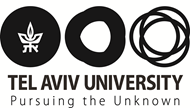Department Seminar of Alexander Kuznetsov- Solving an unsolvable problem of legged locomotion
Solving an unsolvable problem of legged locomotion
Monday July 14th 2025 at 14:00
Kitot Building ground Floor, Room 011
Abstract:
In terrestrial locomotion of both animals and legged robots, most of the energy is spent during leg contact with the ground. These expenditures result from mechanical antagonism between muscles/actuators: some of them produce positive work, while others produce negative work, which cancels out the former. This opposition is inevitable in any serial-linkage leg. The problem cannot be solved completely, only partially. A general way to minimize the amount of mechanical antagonism is through redundancy of degrees of freedom (DoFs) in the leg and their proper sequential switching on and off. In a simplistic model of equilibrium walking, the problem of minimization of the inter-actuator antagonism has a general solution for any number of serial leg segments. The solution involves immobilization (switching off) of all joints except for two. Which two depends on their instantaneous positions relative to the vertical line through the point of foot-ground contact. So, regardless of the number of joints, the leg should optimally act as a temporary two-joint linkage. The next step to further reduce the inter-actuator antagonism is adjusting of the horizontal fore-and-aft component of the ground reaction force (GRF). The optimum solution implies that, during the contact phase, the GRF vector is redirected so as to maintain alignment with the leg joints in the order in which they attain the smallest angles relative to the vertical line through the foot. As the joints pass this line one by one, abrupt changes of the horizontal GRF component from positive to negative (braking) should occur. However, animals cannot switch muscles on and off immediately and, therefore, they tend to align the GRF with some compromise target point located above the hip (for the hind leg) or above the withers (for the foreleg). The suggested principles for the optimal switching of redundant DoFs and the direction of the GRF can be implemented in robotics to reduce the cost of transport.
Bio:
Alexander Kuznetsov graduated from the Biological Faculty of Moscow Lomonosov State University in 1983 as a Master in zoology and botany. Throughout his scientific career, his main topic of research was the biomechanics of the locomotor apparatus of mammals and other vertebrate animals, their walking and running on land. He started his research as a member of the Laboratory of Bionics working on biological prototyping of legged robots with a powerful team of the Institute of Mechanics of the Moscow University under the leadership of Professor Yevgenii Devyanin. His dissertations were devoted to the general structural features of the legs of mammals and birds from the point of view of their optimality in terms of energy expenditures for muscular work during locomotion on land.


